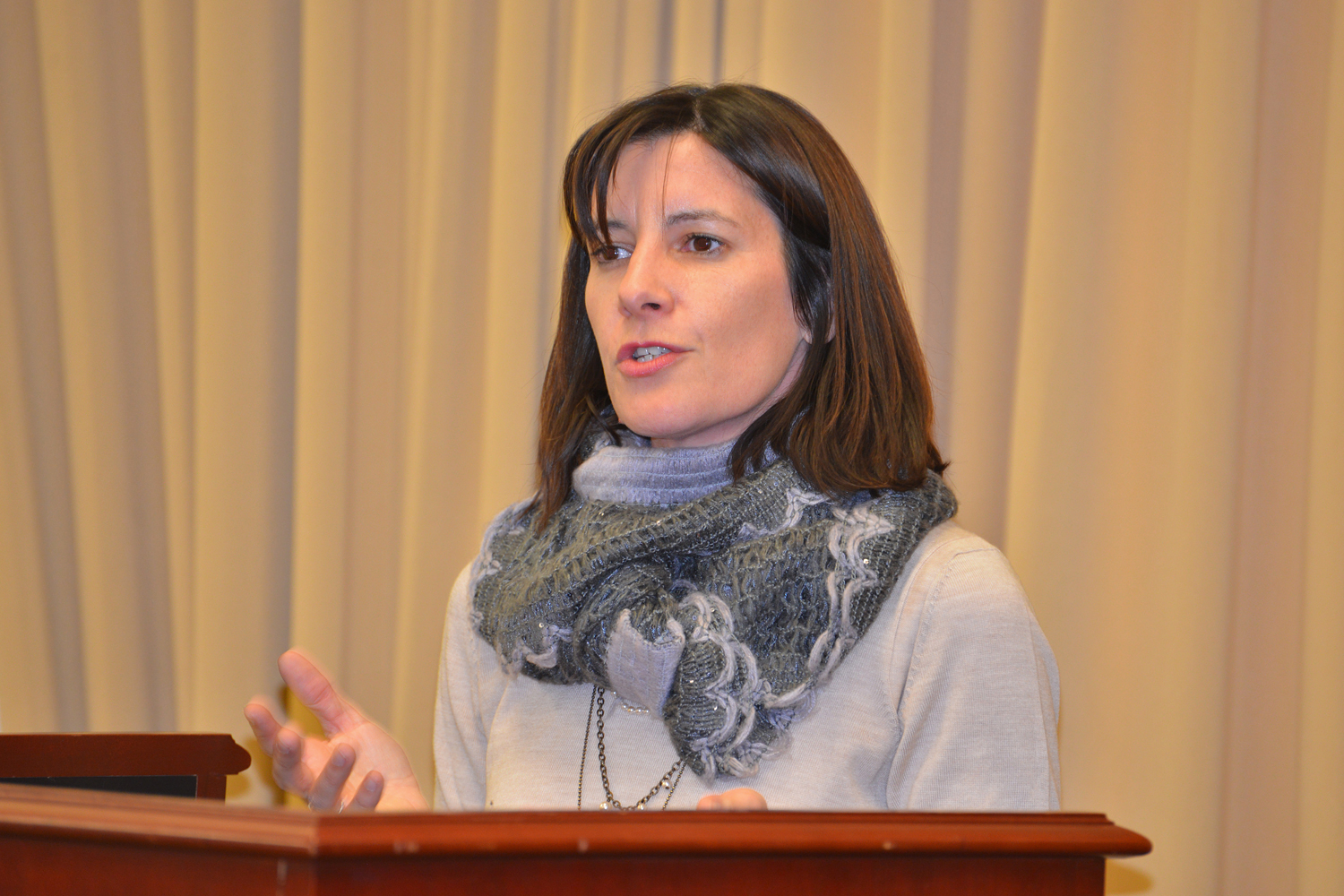The name of the project is complex, but its purpose is straightforward: to develop students’ critical thinking skills, as well as improve their ability to communicate complex thoughts, see a scenario from multiple perspectives, and better relate to people from different cultures.
The process of creating systematic and multifaceted learning units that will teach math, world language, and social studies students these skills has also been complex. But the result of “Prototype of P-20 and Interdisciplinary Collaboration and P-20 Articulation” — funded jointly by UConn’s College of Liberal Arts and Sciences (CLAS) and the Neag School of Education — will be not just more informed and inquisitive learners, but also more informed and skilled teachers.
More simply called Math Intercultural Competence, or Math ICC, by those involved, this “Prototype of P-20″ project also integrates key Common Core requirements in math, as well as standard requirements of world languages and social studies that middle school students must master. The innovative learning units developed by the interdisciplinary Math ICC team will officially be introduced to sixth-graders at West Woods Upper Elementary School in Farmington, Conn., during the coming academic year.
Connecting the Classroom and the Real World
The units challenge students to find solutions to real-life problems affecting various parts of the world today, such as dwindling water supply. In another unit, students must help countries create a response plan for an earthquake, tsunami, or other natural disaster.
The lessons, like the project itself, follow the theoretical framework for intercultural competence developed by British educator Michael Byram, professor emeritus at the University of Durham and one of the leaders in the field. Byram spent an intensive week in February 2015 in Connecticut collaborating with all involved and continues to work closely on unit refinement and research components of the project.
“Learning math isn’t just about learning new formulas, and learning a language isn’t just about learning new words. There’s a context and culture involved in both fields that need to be understood, too,” says project co-principal investigator and UConn CLAS faculty member Manuela Wagner, an associate professor of foreign language education. “Language learners need to learn how to use the language in a socially and culturally appropriate way. Also, many of the critical thinking skills students use to solve math problems can be applied to learning a new language, and vice versa. The learning units we created show students how problem-solving strategies and intercultural competence they learn in one subject can be applied to different disciplines and to real-life situations.”
Fellow CLAS associate professor of mathematics and project co-principal investigator Fabiana Cardetti adds: “There are many connections between different subjects, as well as connections between classroom learning and the outside world. But up until now, there’s been too-little emphasis on those overlaps. Common Core also now requires that students be able to critically consider, and then effectively communicate, their reasoning in math. So that idea of forcing students to consider ‘How did I arrive at this solution?’ is a big part of this project, as well as to show them the importance of opening their minds to different perspectives and possibilities. There are often multiple ways to get to a solution, and students need to be able to see that, as well as to be able to critique why some solutions are more effective than others.”
Understanding different cultures and developing a sense of cultural competence is essential, Wagner and Cardetti say, to living in today’s global society.
Many Layers of Collaboration
West Woods School teachers and administrators have been key contributors, as have partnering faculty and graduate students from UConn’s Neag School. Marijke Kehrhahn, associate professor of adult learning and former director of the Teachers for a New Era at UConn, and Donalyn Maneggia, Teachers for a New Era program assistant, have been “invaluable” players, says Wagner, who also served as the UConn Teachers for a New Era assistant director.
“We couldn’t have done any of this work without them,” Wagner says, or without the Neag School having been selected in 2003 to join the prestigious Carnegie Corporation Teachers for a New Era network. Awarded to just 11 colleges in the United States, the Teachers for a New Era designation recognizes institutions whose teacher education programs provide exemplary sites to design and implement initiatives to improve student outcomes through evidence-based practices and faculty collaboration. Math ICC is one of its outgrowths.
Others from the Neag School involved in Math ICC include Melissa Scarbrough, a preservice teacher enrolled in Neag’s Integrated Bachelor’s/Master’s (IB/M) Teacher Education Program, and curriculum and instruction doctoral student Maddeline Williams.
“The work we’ve done to create practical learning units that bring together teachers from different disciplines, and investigate the connections between math, world language, and social studies, is challenging,” the Neag School’s Kehrhahn says. “It involves not just determining what basic skills must be taught in each of these curriculums, but how they can be applied to a framework of intercultural competence and best be put into practice.”
Teacher education and ongoing professional development are additional elements of the project. Another focus has been determining how teachers can implement these and similar types of learning units without having to take on additional work.
“Teachers work so hard already, and in most school systems, resources are limited. So as we created these units, we made sure we also created an implementation plan that would support teachers reaching their goals,” Cardetti agreed.
Two new graduate-level classes were also developed around understanding intercultural competence and applying it to the classroom.
“Ideally, these classes will make intercultural competence part of teacher education, further ingraining ways to incorporate social justice, equity, and global understanding into classroom lessons,” Cardetti says. “One of the next steps in this project is to create materials that all schools and school districts can use to implement similar models. Our goal is to make these lessons available and adaptable to all teachers and students.”



